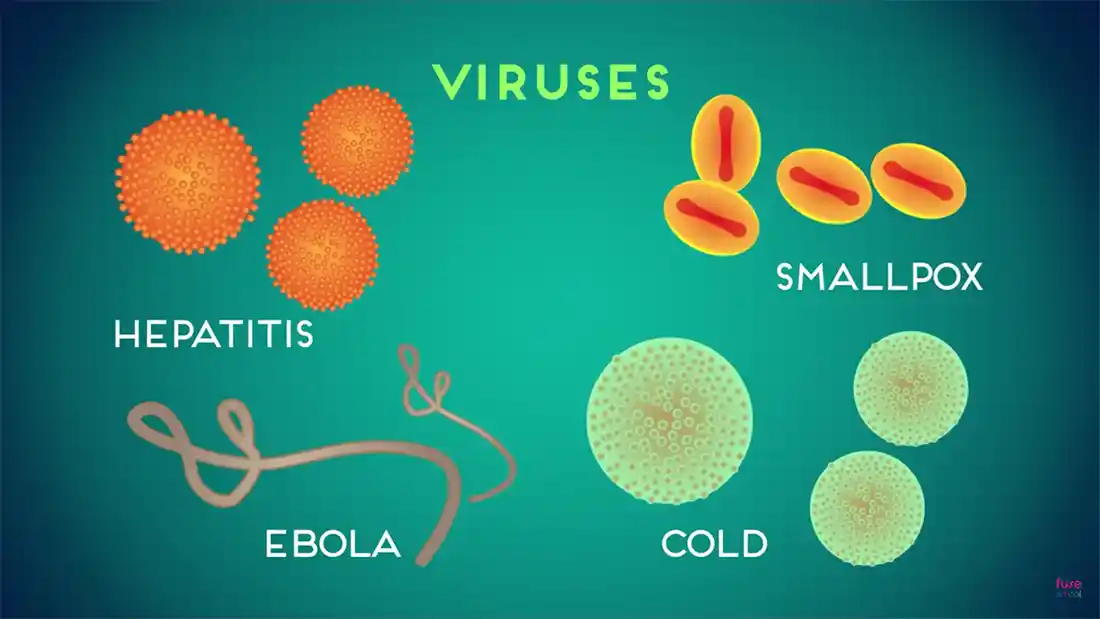

Microorganism, bacteria, fungi, archaea, single-cell organisms, mould, yeast, chitin, hyphae, microscope, electron, light.
A microorganism is very small. Like, single-cell size small. So small in fact, that you will need a microscope to see them. They cannot be seen by the naked eye. That's why they are called microorganisms.
Well, if you've come here from other pages on the website, you will know that bacteria are microorganisms, as they are single-celled organisms that have to be seen under the microscope.
They are everywhere. Literally. On your hand, on the surfaces you touch, and on other people, on your dog, on your cat, on foods we eat. Everywhere.
Another common one, and one we wouldn't think is a microorganism as we can see it, is yeast. It helps us to make bread, giving it that rising factor when in the oven. But it is a microorganism. Each piece of yeast you buy in the shops is a whole bunch of cultured microorganisms put together.
Lastly, mould is a type of microorganism. It can infect various areas - a fruit such as oranges create it when we leave them to go rotten; it can form up in the bathroom if you don't clean it often enough, and is generally going to grow well in damp, warm conditions.
The following still is from a video on microorganisms, with the following details:
Please click on the image to view the video.

Fungi can be considered as a microorganism. It's true. This is because they also work on a cellular level, and can be seen under a microscope. If you have a look at the types of pathogens listed in my Communicable Diseases page, you will notice that fungi are listed here, with organisms such as athlete's foot.
Fungi are specific, as they contain both chitin and hyphae. Hyphae are the long filamentous branches you see around fungi when you dig them up. They are essential for fungi to grow and are often referred to as mycelium. They have a varied function list too, including:
Chitin is most common in fungi as the cell wall around each cell and can be compared to cellulose in trees for having the same function (bark is the outer cell wall of a tree, and is made from cellulose, right?). While this is true, chitin is also present on arthropods, such as ants and shellfish, as they have an exoskeleton.
Diseases grow best at a pH level of between 5 and 8. They thrive on it being in these neutral conditions. From a food perspective, if you undercook a chicken, for example, you are more at risk of suffering from salmonella poisoning than if you cook it properly. When we cook food, we should always try and make sure it is thoroughly cooked, by following guidelines. Also, as a rule of thumb, cooking should be over 75° Centigrade to make sure the food is hot enough to kill off any bacteria that goes on it.

There are some 6 trillion trillion (6 and 30 zeros) microorganisms in the world. Put that into perspective, there are 7 billion people in the world.
When you want to take a closer look at a microorganism, you have to use a microscope. There are plenty to choose from, and they each show a different result.
Microscopes have been around since the 14th Century in some archaic form. But the microscopes we are used to seeing came about in the 1930s, with the first electron microscope being used in 1938. Here is a closer look at some of the types of microscope:
A light microscope uses a light underneath or alongside it so you can see from underneath it with the naked eye. It illuminates the plate so when you look down the ocular pieces, it allows you to see what organism or slide you are looking at. This is the most common type of microscope.
An electron microscope is digital. It uses beams of electrons instead of light to give a far better resolution of image when looking at an organism under it. It also has greater magnification than that of a light microscope, so you can see more detail and a closer look.
Try and answer the following questions without looking first:
The eyepiece/lens. This is not the same as an objective lens.
It allows you to focus the stage closer or further away in order to see at the right magnification when looking at specimens underneath.
[1]Tardigrade image courtesy of  Strange Planet by Nathan W Pyle.
Strange Planet by Nathan W Pyle.
Disclaimer | About Me | Sitemap
Website design by SyntaxHTML.



Blue icons adapted from icons courtesy of Smashicons.com